I’ve challenged myself to try twelve new outdoor (and outdoor-adjacent) activities in 2025 to get out of my comfort zone and have some new adventures. This is a recap of one of those attempts.
I’ve been thinking about a missed pint of beer for more than three years. In my imagination, the glass is cold and dripping with condensation, leaving a ring on a worn cardboard coaster. The beer is locally crafted, at minimum Spotted Cow1, but ideally from a brewery so micro that I won’t be able to find it outside of this county. On a matching coaster, there’s a glass of mostly ice cubes that clink together as I take a long sip. This is the oasis that I’ve dreamed about ever since skipping a roadside bar on a 28 mile hike where I ran out of water.2
However, the reality turned out to be a can of PBR accompanied by the smell of stale smoke and conversation with the bar regulars that reminded me of my privilege in outdoor spaces.
When I last hiked this section of trail through the Northern Kettle Moraine State Forest, I ran out of water and, in my dehydrated state, made a series of bad decisions. I spilled a significant amount of my packed water, failed to get the trailside water pumps to flow, skipped a short detour to another water source, and talked myself out of taking a break when I spotted a roadside bar because I only had three miles left.
This time, I wanted to redeem myself by conquering the water pumps, enjoying a mid-hike beer, and finishing with water still sloshing around in my pack. I didn’t have the time3 nor the inclination to do another 28 mile day, so instead I targeted the 4.5 mile section that accounted for the majority of my tears for an out-and-back adventure.
I started with my old nemesis, the water pump. It was dry, so I grabbed the long green handle and sent up a silent wish that no other hiker would round the corner to see me struggling. Five pumps didn’t do anything. Neither did the next five. I decided to give it another set of ten before I started worrying. On the seventh pump, water finally began flowing and I filled up a collapsible camping cup to taste the sweetness of my success. It didn’t make me forget the 84° heat with 63% humidity and no breeze or the biting insects buzzing so insistently by my ear that I thought my phone was vibrating with an incoming call, but the victory did give me a boost of confidence.
Retracing my footsteps from three years prior brought back more vivid memories than expected. I instantly recognized the picnic table where I had eaten applesauce in lieu of further depleting my water supplies and where I debated throwing in the towel. From that seat, I had consulted my map to see the next water source was off a spur trail a half mile ahead and I had waffled because I didn’t want add extra mileage just to face another impossible water pump. That picnic table marked the 20 mile achievement of that hike, but it had just felt like despair on my last visit. This time I eyed it from a distance, but didn’t sit down.
Soon, I passed by the turnoff to that other water source and once again skipped it, though this time on purpose. I was surprised to discover that the intersection was better marked than I remembered. Had I truly missed the turn last time or had I made a conscious choice to keep hiking and then overwritten the memory after realizing that had been a bad decision?
Eventually, the trail diverted from the path of my original hike, thanks to a reroute of the segment that I helped build last fall. However, the new tread held just as many memories—here is where we rolled a giant rock down a steep slope, there is where I was interviewed for the local news, step gingerly around that spot where there had once been a nest of ground bees.
I took sips of (increasingly warm) water anytime the slightest thought of thirst passed through my brain, however, the siren song of cold liquid served in an air-conditioned comfort still called to me. No business hours or telephone number had turned up for the bar in my online search, so I was relying on a single Facebook comment from two years ago that claimed it would be open Thursday through Sunday.
Finally, the road came into view and I turned towards an inconspicuous house with an Old Style sign out front and a small neon OPEN sign in the window. The driveway snaked around to the back of the building and I felt a dozen eyes on me as I walked past a bank of windows. Nothing about this felt like an establishment open to the public—was I about to wander uninvited into someone’s living room? The door stuck in the swollen frame and when I finally forced it open, I walked into a terrible movie cliché. I was the out-of-towner and the half dozen regulars all turned to silently stare at me.
In the barely 11 minutes that I spent inside, I downed a cold can of PBR while the bar regulars tsk-tsked about my decision to hike alone as a woman4, predicted that I would get heat stroke because I was wearing a long sleeve shirt for sun protection, and made wildly inaccurate generalizations about crime in Milwaukee and Chicago. When I was asked directly to weigh in on one man’s concerns about “the streets,” I purposefully misunderstood the question and launched into a rambling story about a water main project a couple years ago that caused my street to be torn up and repaved repeatedly over the course of a summer.5
This was supposed to be my oasis, but instead I couldn’t wait to retreat to the security of the woods. Walking back to the trailhead, I crunched on stale pretzels and mentally sorted through my discomfort.
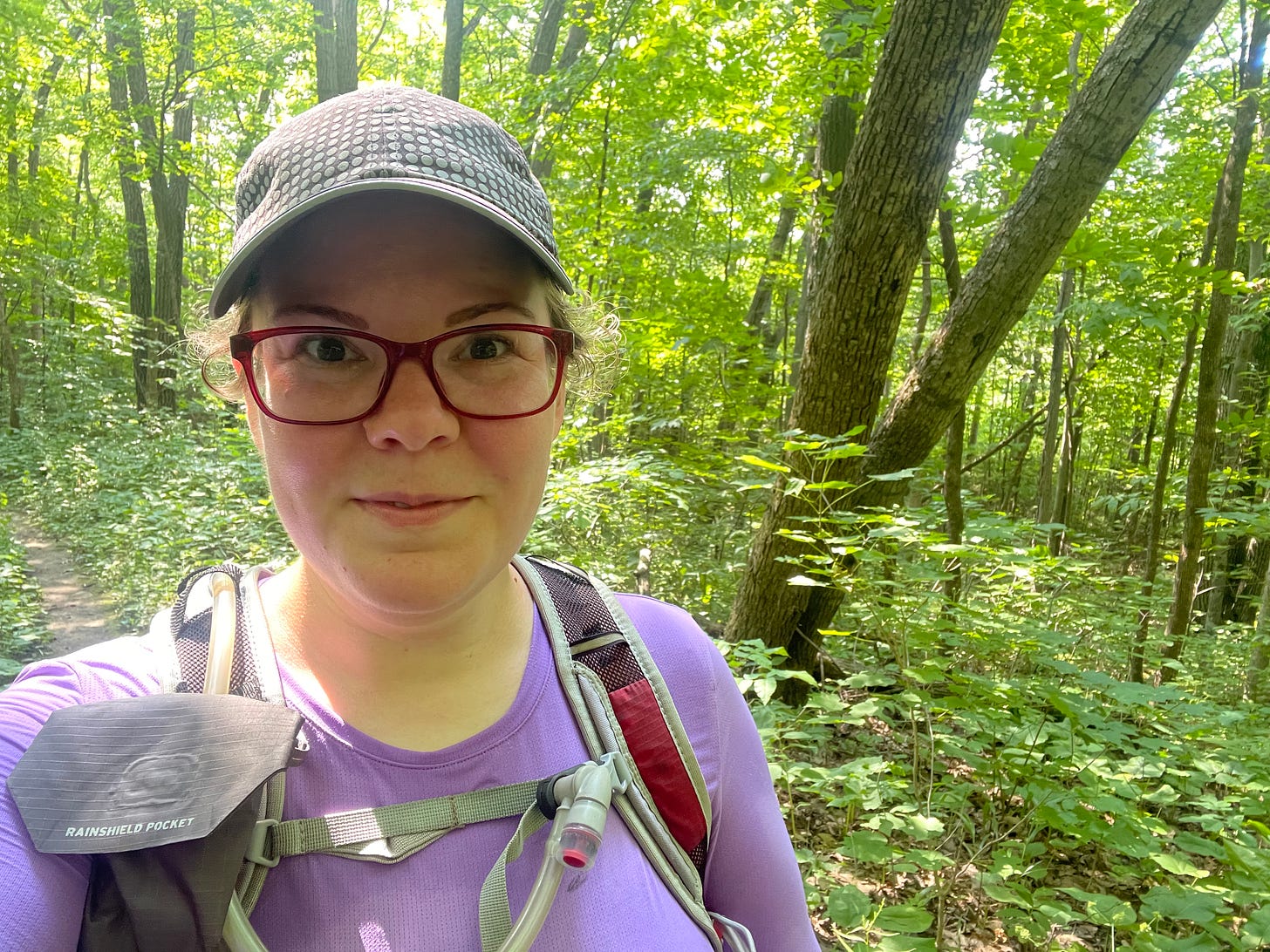
What bothered me the most was that my fantasy of a safety net—this random bar along the trail where a dehydrated hiker could refill in an emergency—had been punctured. I’m sure they thought they were being adequately friendly to a stranger, but to me it felt like an uneasy truce. People don’t typically tense up when I walk into a room—I’m an overweight white woman in my late thirties—so what would their reaction have been if I had looked visibly different from them? I was keenly reminded that my privilege affords me the ability to enter an unknown small-town bar and not worry about my safety.
When talking about making trails a welcoming place for diverse groups of people, it’s easy to say, “Hikers are a friendly bunch, you’ll be fine!” But going hiking often means interactions beyond the bubble of blazed trails—filling up at rural gas stations, grabbing a post-hike dinner at a roadside bar, changing a flat tire at a trailhead parking lot, or walking along a connecting route6. The need to feel safe and welcome extends beyond the trail corridor.
When I retraced my steps for this challenge, I expected to notice interesting rocks and fungi that I’d missed previously in my dehydrated state. I expected that I would spend so long at the bar that I’d be hiking the final miles back to my car after sunset. I expected a redemption arc for those tears shed at the picnic table three years ago. Instead, I got a harsh reminder that what seems like an oasis from a distance could be just another inhospitable patch of desert, depending on who is opening the door.

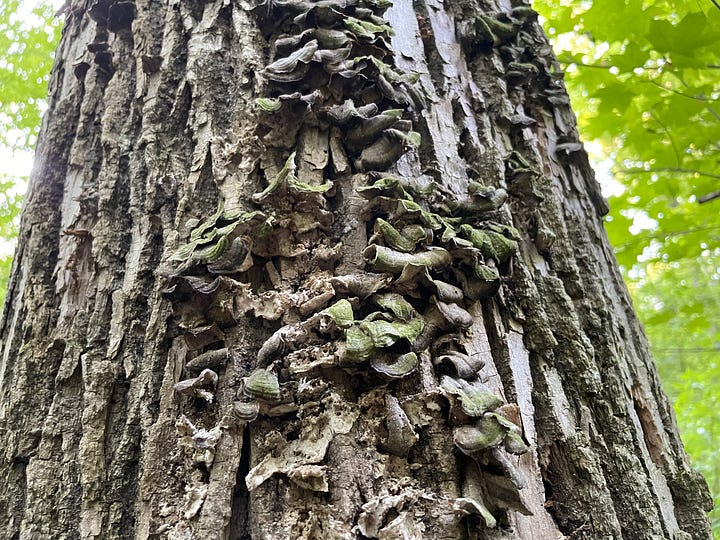
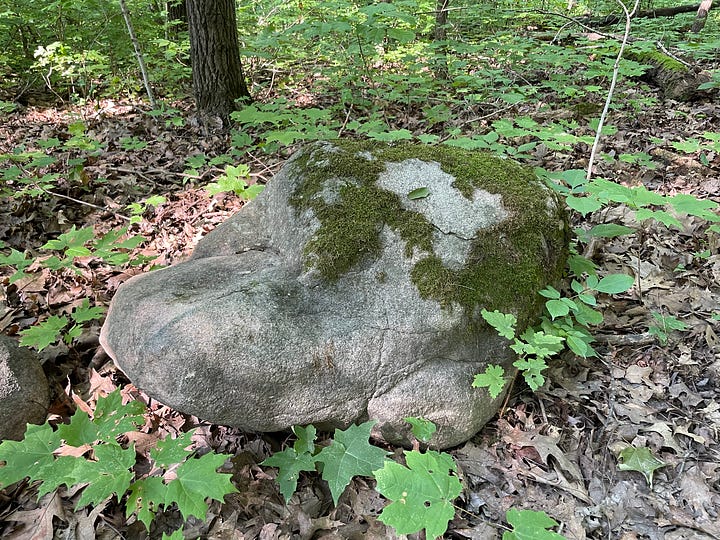
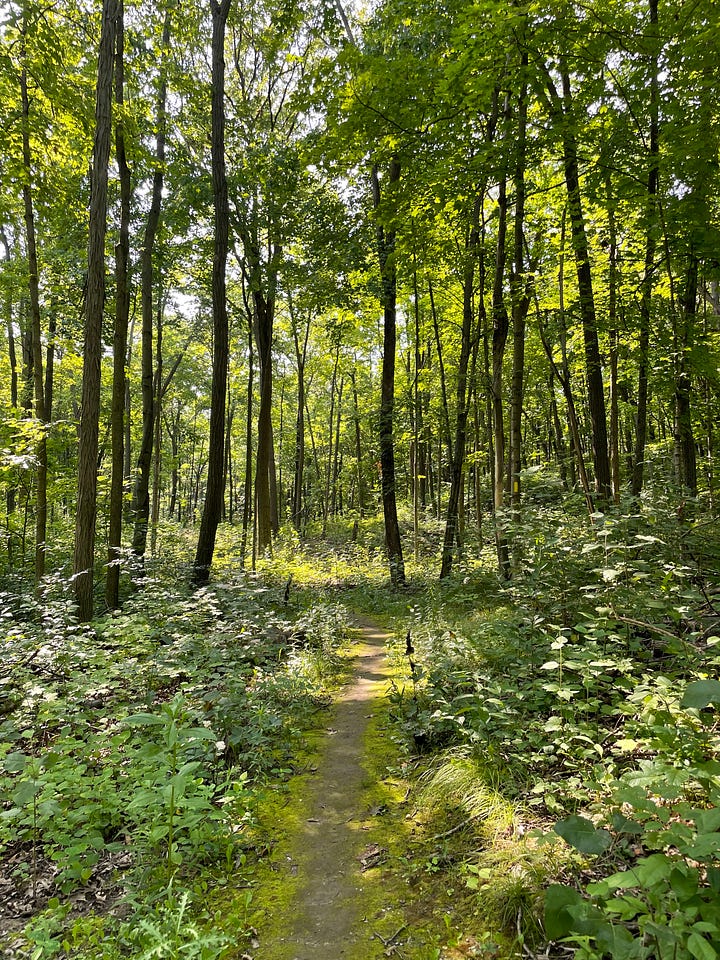
Spotted Cow is a beer from New Glarus Brewing Company in southern Wisconsin. Though New Glarus doesn’t distribute outside of Wisconsin, it is common to find on their beers on tap at bars throughout the state.
To catch up on the first installment of this story:
Don't Forget to Drink
I never plan to get dehydrated when I spend time outdoors, but it happens more often than I’d like to admit. I have to use a hydration bladder with a tube just inches from my mouth for hiking and backpacking because I can’t trust myself to stop and get a water bottle out of my pack, even if I’m parched.
I’ve been trying to redo this hike since June, but the heat and poor air quality in the Upper Midwest has made for a poor summer hiking season.
They weren’t the first and they won’t be the last, but I really wish people would stop telling me I’m incapable of hiking solo:
I’ve found that talking about road construction is really helpful for changing the subject because many people feel strongly about whatever road project is happening near them, so they won’t be tempted to return to the previous topic.
For previous thoughts about walking on rural roads:
Connecting Routes
Hikers on connecting routes are more visible to these neighbors than hikers on a dedicated trail, just as those walking into a bar mid-hike carrying a pack and trekking poles are more visible than the hikers who cleaned up in their car before crossing the threshold. Visibility leads to curiosity which leads to conversation.










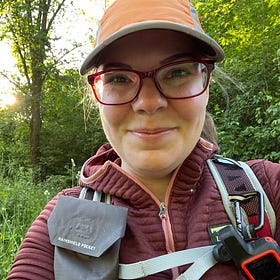


Oh that picnic table of despair... We've all eaten humble pie there I think.
Your redo is like a parable or life lesson. Are things ever the way we remember them? I like that you retraced part of the hike. Old men in bars are good at drinking and opining, but you’re in the great outdoors logging the miles. Thanks for another inspiring report.